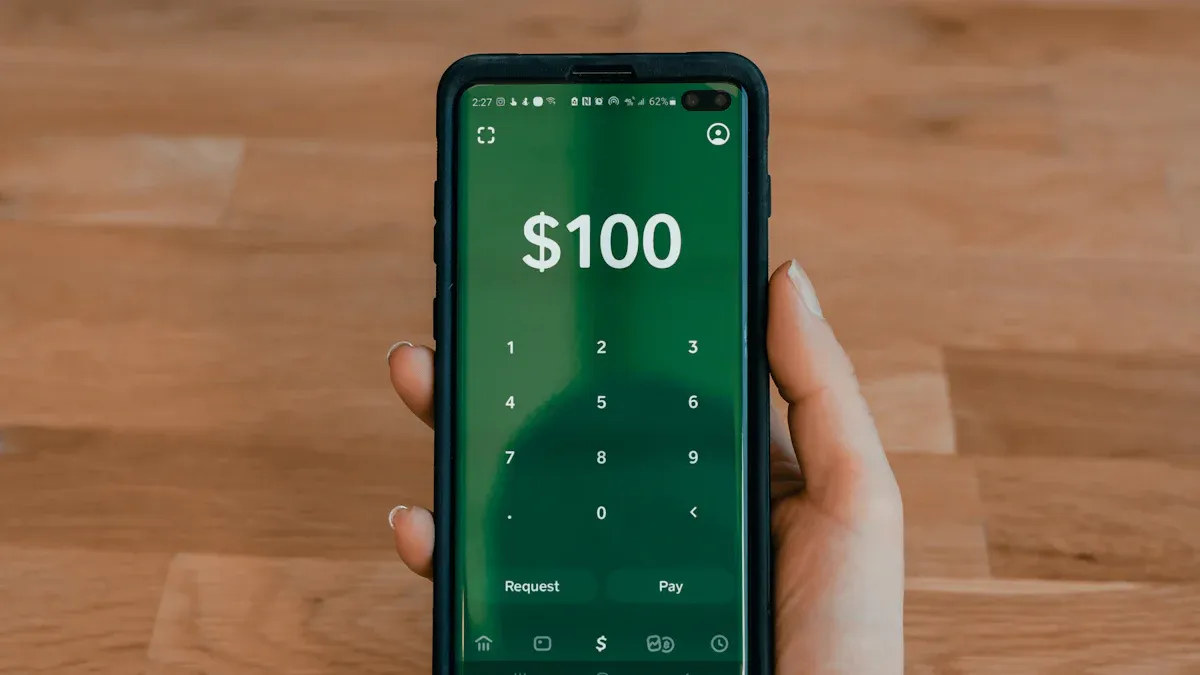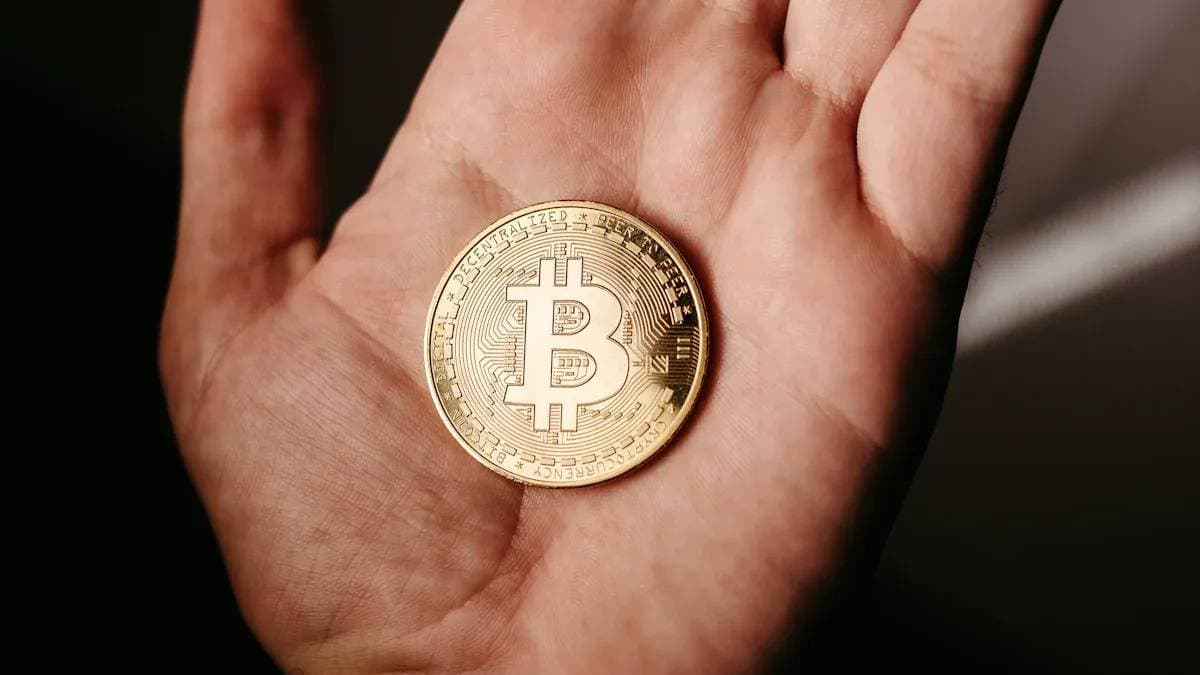- EasyCard
- Trade
- Help
- Announcement
- Academy
- SWIFT Code
- Iban Number
- Referral
- Customer Service
- Blog
- Creator
Sending Money from the US to India: An Analysis of Xoom's Transfer Features and Diverse Options

Image Source: unsplash
Imagine that with just the recipient’s UPI ID, remittance can arrive in India from the US in a few minutes. The demand for sending money from the US to India continues to grow; in the 2023-2024 fiscal year, US remittances accounted for 27.7% of India’s total received remittances, making it its largest source country for remittances.
But is Xoom’s speed really that fast? What exactly are its exchange rates and fees? Where does it excel compared to other options?
Key Points
- Xoom is a remittance service under PayPal that allows money to be sent quickly from the US to India.
- Xoom supports transfers using UPI ID, making remittances very simple, just like sending an email.
- Xoom provides multiple receipt methods, including direct bank deposit, cash pickup, and mobile top-up.
- Xoom has a strong advantage in speed, but Wise is usually more cost-effective in exchange rates.
- Compared to traditional bank wire transfers, Xoom is faster, has lower fees, and is more convenient to operate.
Core Features of Xoom Remittances to India

Image Source: pexels
When choosing a remittance service, speed, convenience, flexibility, and security are the four key considerations. As a service under PayPal, Xoom provides highly competitive feature functions targeted at the Indian market in these aspects.
1. Lightning-Fast Arrival Service
For many families needing urgent financial support, remittance speed is crucial. One of Xoom’s core advantages is its excellent arrival efficiency.
Key Tip: Small remittances arrive in minutes.
Specifically, Xoom’s arrival time mainly depends on the remittance amount and the receiving bank:
- Amounts below 500,000 Indian Rupees: When sending to major Indian banks (such as ICICI Bank, HDFC Bank, State Bank of India (SBI), Punjab National Bank (PNB), Axis Bank, etc.), funds usually arrive in the recipient’s account within a few minutes.
- Amounts over 500,000 Indian Rupees: For larger amounts, processing time is slightly longer but usually completes arrival within 2 hours.
This minute-level arrival experience allows you to handle urgent financial needs more calmly.
2. Supports UPI ID Remittances
This is a game-changing feature of Xoom in the Indian remittance market. The Unified Payments Interface (UPI) has become the absolute mainstream in India’s digital payments, occupying over 85% of the digital payment share.
You no longer need to ask for and enter cumbersome bank account numbers, branch names, and IFSC codes. Now, you just need to obtain the recipient’s UPI ID (usually in the format name@bank) to initiate the remittance. This feature greatly simplifies the remittance process, significantly reduces the risk of entering wrong information, and makes the entire experience as simple as sending an email.
3. Multiple Receipt Methods
Xoom understands that different recipients have different needs, so it provides flexible receipt options to ensure funds are delivered in the most convenient way.
- Bank Deposit This is the most common and direct method. Funds are directly deposited into the recipient’s bank account in India, allowing them to use it anytime via online banking, ATM, or bank card.
- Cash Pickup If your recipient does not have a bank account or needs cash urgently, this is an ideal choice. Xoom partners with multiple financial institutions in India, and recipients can pick up cash at nearby partner locations with a transaction code and valid ID. Main partner locations include:
- Muthoot Finance
- Manappuram Finance
- Ahalia Exchange
Please Note: Cash pickup has amount limits, depending on your Xoom account level. The following are daily and monthly rolling limits (in USD):
Account Level Daily Limit 30-Day Rolling Limit Level 1 $2,999 $6,000 Level 2 $10,000 $20,000 Level 3 $10,000 $20,000 - Additional Services In addition to direct fund transfers, Xoom also provides some convenient life services. You can directly top up mobile phone credit or pay utility bills for family in India, further demonstrating the diversity of its services.
4. PayPal Reputation and Security Guarantees
When conducting international remittances, fund security is the primary prerequisite. As part of PayPal, Xoom inherits its world-class security standards and reputation guarantees, making every US to India remittance worry-free.
Xoom adopts multiple security measures to protect your account and transactions:
- Data Encryption: Uses 128-bit data security encryption technology and VeriSign SSL certificate to ensure your personal and financial information is not stolen during transmission.
- Fraud Monitoring: Powerful fraud monitoring protocols continuously analyze transactions to detect and stop suspicious activities in time, protecting you from fraud.
- Compliant Operations: Strictly complies with federal regulations such as the Bank Secrecy Act to ensure all operations are legal and compliant.
- Full Refund Guarantee: Xoom promises that if your funds fail to reach the designated recipient, they will fully refund your transaction amount.
With PayPal’s strong endorsement and solid security technology, you can confidently complete remittances through Xoom.
Sending Money from the US to India: Full Xoom Operation Process

Image Source: unsplash
After understanding Xoom’s powerful features, you may wonder if the actual operation is equally simple. The answer is yes. Xoom simplifies the complex international remittance process into a few intuitive steps, making it easy for you to get started.
1. Account Registration and Login
Before starting, you need a Xoom account. If you already have a PayPal account, you can log in directly with it, saving the trouble of re-registration.
When setting up transfers for the first time or to increase remittance limits, Xoom may require you to verify your identity. You need to prepare the following documents:
| Document Type | Example |
|---|---|
| Photo ID | Driver’s license, state ID, passport |
| Proof of Address | Recent utility or phone bill |
| Proof of Fund Source | Bank statement or tax document |
This process is designed to secure your account and comply with financial regulatory requirements.
2. Four-Step Method to Initiate Remittance
After logging into your account, initiating a remittance only requires four simple steps:
- Select Receiving Country and Amount: Choose India, then enter the USD amount you wish to send or the INR amount the recipient will receive.
- Select Receipt Method: Based on the recipient’s needs, choose bank deposit, cash pickup, or UPI ID transfer.
- Fill in Recipient Information: Enter the necessary recipient information.
- Select Payment Method and Pay: After confirming fees and exchange rate, choose your payment method to complete payment. Xoom supports multiple flexible payment options:
- Bank account
- Credit card
- Debit card
- Your PayPal balance
3. Fill in Recipient Information
This is the key step determining whether the remittance succeeds. The required information varies depending on the chosen receipt method.
Core Difference: UPI ID remittance greatly simplifies information input. You no longer need cumbersome bank account numbers and IFSC codes; just a Virtual Payment Address (VPA), such as
name@bank.
- If choosing bank deposit: You need to provide the recipient’s full name, bank name, account number, and IFSC code.
- If choosing UPI ID: You only need to enter the recipient’s UPI ID. This is one of the most convenient ways to send money from the US to India.
- If choosing cash pickup: You need to provide the complete name on the recipient’s government-issued ID.
4. Track Remittance Status
After completing payment, you do not need to wait anxiously. Xoom provides full tracking functionality. You can check the remittance status anytime via the Xoom website or mobile app, from “Processing” to “Delivered,” with every step clearly visible. When the remittance successfully deposits into the recipient’s account, you will also receive a notification, giving you complete peace of mind.
Xoom Compared to Other Remittance Methods
When choosing a remittance service, you will find multiple options on the market. Each service has its unique advantages and applicable scenarios. To help you make the best decision, we compare Xoom in detail with the three most mainstream remittance methods on the market: Wise, traditional bank wire transfers, and Remitly.
1. Xoom vs. Wise
Wise (formerly TransferWise) is known for its transparent fee structure and highly competitive exchange rates. When choosing between Xoom and Wise, you are actually trading off between “ultimate speed” and “optimal cost.”
- Exchange Rates and Fees: Wise’s core advantage is that it usually uses the mid-market rate, charging only a clear, pre-disclosed service fee. In contrast, Xoom’s exchange rate, while sometimes close to the mid-market rate, usually includes a certain currency conversion markup. This means that in most cases, Wise has an advantage in exchange rates.
- Speed and Convenience: This is Xoom’s home field. Xoom’s minute-level arrival and direct support for UPI ID provide unparalleled convenience for users pursuing speed. Wise’s transfer speed is also fast but usually measured in hours, not minutes. Additionally, the cash pickup service provided by Xoom is not available with Wise.
To give you a more intuitive understanding of cost differences, here is a total cost comparison for sending $1,000 USD to India:
| Payment Method | Wise Total Cost (USD) | Xoom Total Cost (USD) | Who is Cheaper? |
|---|---|---|---|
| Bank Account | $1,103.45 | $1,108.40 | Wise |
| Debit Card | $1,113.35 | $1,141.89 | Wise |
| Credit Card | $1,141.45 | $1,141.89 | Wise |
Decision Guide
- If you care most about cost: Wanting every dollar to exchange for the most rupees, Wise is usually the better choice.
- If you care most about speed: Needing funds to arrive in a few minutes or the recipient preferring to receive via UPI ID, Xoom’s advantage is irreplaceable.
2. Xoom vs. Bank Wire Transfer
Compared to traditional bank wire transfers (Wire Transfer), Xoom shows overwhelming advantages in almost all aspects. Bank wire transfers are an outdated and expensive method, especially unsuitable for small, frequent personal remittances.
- High and Opaque Fees: The fee structure for bank wire transfers is very complex. You not only pay the sending bank’s handling fee (averaging about $44 USD), but may also face a series of hidden fees:
- Intermediary Bank Fees: International wire transfers usually pass through one or more “intermediary banks,” each potentially charging $15 to $50 USD in processing fees.
- Receiving Bank Fees: The receiving bank in India may also deduct a fee when processing the deposit.
- Exchange Rate Markup: The exchange rate provided by banks is usually 2-5% worse than the mid-market rate, which is the largest hidden cost.
- Slow Speed: An international wire transfer usually takes 1 to 5 business days to arrive. If encountering holidays or additional bank reviews, the time will be even longer. This forms a stark contrast with Xoom’s minute-level arrival.
- Cumbersome Operation: You need to accurately fill in a large amount of information, such as recipient name, address, bank name, SWIFT/BIC code, account number, etc. Any small error can lead to remittance failure or severe delay.
Core Conclusion: For personal US to India remittances, Xoom comprehensively outperforms bank wire transfers in fees, speed, and operational convenience. Unless you need to conduct large commercial transfers with special compliance requirements, there is no reason to choose traditional bank wire transfers.
3. Xoom vs. Remitly
Remitly is Xoom’s direct competitor in the speed-focused remittance track. Both focus on providing users with fast, convenient digital remittance experiences and support bank deposits and cash pickups to India.
The main differences between the two often lie in exchange rates, fees, and promotional activities for new users.
- Service Similarities: Both provide two speed options—faster Express service (usually paid with debit/credit card) and more economical Economy service (usually paid with bank account).
- New User Promotions: Remitly is usually very active in attracting new customers. It offers preferential exchange rates or fee reductions for first-time remittance users.
- First Transfer Promotion: New users usually automatically get special rates without a promo code.
- Referral Program: Refer friends to use, and both parties have the chance to get rewards.
- Limited-Time Promotions: Remitly regularly launches time-limited special exchange rate promotions, such as for remittances below a certain amount.
Decision Guide Since Xoom and Remitly’s services are very similar, the best choice often depends on the real-time quotes and promotions at the moment of your remittance.
Recommended Operation: Before initiating the remittance, open both Xoom and Remitly’s websites or apps at the same time, enter the same remittance amount, and compare the final arrival amounts and estimated arrival times of both. Choose the one that provides higher value at that moment.
For users pursuing ultimate speed, trusting the PayPal brand, or needing cash receipt options, Xoom is an excellent choice. If your recipient needs money urgently or prefers UPI, Xoom’s minute-level arrival advantage is obvious. Before your next US to India remittance, you can visit the Xoom official website to check the latest promotions.
New User Tip: Xoom often provides promotional exchange rates for users sending money from the US to India for the first time, making your initial experience more cost-effective.
FAQ
How are Xoom’s remittance fees calculated?
Xoom’s total fees include two parts:
- A fixed transfer service fee.
- The markup included in the currency conversion exchange rate.
Tip: Paying with a bank account usually has the lowest fees. You will see a clear breakdown including all fees in the final step of initiating the remittance.
What if my remittance fails?
Rest assured. Xoom provides a full refund guarantee. If your funds fail to reach the recipient for any reason, Xoom promises to fully refund your transaction amount. You can contact customer service for help at any time.
What information do I need from the recipient to remit via UPI ID?
You only need the recipient’s UPI ID in India. It is a virtual payment address, usually in the format name@bank. This eliminates the trouble of entering cumbersome bank account numbers and IFSC codes, making remittances simpler and less error-prone.
What is the difference between paying with a credit card, debit card, or bank account?
This mainly affects fees and speed.
- Bank Account: Lowest fees, but arrival speed may be slightly slower.
- Credit/Debit Card: Higher fees, but usually achieves the fastest arrival speed, ideal for urgent remittances.
*This article is provided for general information purposes and does not constitute legal, tax or other professional advice from BiyaPay or its subsidiaries and its affiliates, and it is not intended as a substitute for obtaining advice from a financial advisor or any other professional.
We make no representations, warranties or warranties, express or implied, as to the accuracy, completeness or timeliness of the contents of this publication.




Contact Us
Company and Team
BiyaPay Products
Customer Services
BIYA GLOBAL LLC is a licensed entity registered with the U.S. Securities and Exchange Commission (SEC No.: 802-127417); a certified member of the Financial Industry Regulatory Authority (FINRA) (Central Registration Depository CRD No.: 325027); regulated by the Financial Industry Regulatory Authority (FINRA) and the U.S. Securities and Exchange Commission (SEC).
BIYA GLOBAL LLC is registered with the Financial Crimes Enforcement Network (FinCEN), an agency under the U.S. Department of the Treasury, as a Money Services Business (MSB), with registration number 31000218637349, and regulated by the Financial Crimes Enforcement Network (FinCEN).
BIYA GLOBAL LIMITED is a registered Financial Service Provider (FSP) in New Zealand, with registration number FSP1007221, and is also a registered member of the Financial Services Complaints Limited (FSCL), an independent dispute resolution scheme in New Zealand.




















